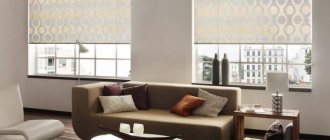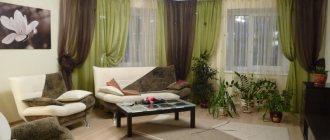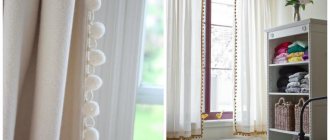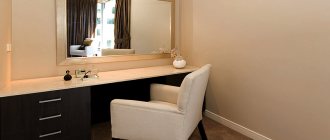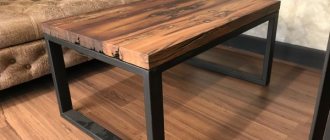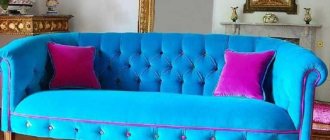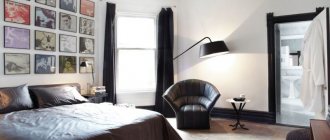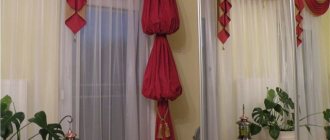Velvet and its varieties
Velvet, like silk, was learned to be made in Ancient China, and in Europe they became familiar with it closer to the 13th century. The material is made by weaving two independent thread warps; the fiber that forms the pile passes between these warps.
The usual fabric with a pile on the front side is formed after cutting the bases.
Initially, velvet fabric was made exclusively from natural silk. Silk threads provide special softness to the fabric, its pile is short, thick and pleasant to the touch, and silk velvet is still the most expensive material.
Later, more affordable varieties of fabric were invented, in which cotton or linen, and later synthetic fiber, became the raw material for the base.
These fabrics have a decorative appearance due to the preserved method of weaving threads, and their characteristics and practical qualities are determined by the type of raw materials used.
The following types of velvet are used for sewing curtains:
- Velveteen. The material is most often made of cotton. It is easily recognized by its specific pile, which forms a ribbed pattern on the front side. Thanks to its vertical pattern, corduroy can improve the proportions of a small room, visually raising the ceiling.
- Velours. The basis of the material is cotton fiber (cut velor) or synthetic knitwear (loop velor). Velor appears thinner than velvet due to its thinner backing, although its pile is slightly longer. Depending on the laying of the pile, smooth, shaped, and embossed types of fabric are distinguished.
- Velvet devore. Textured material with a transparent or translucent base and an exquisite velvet pattern obtained using chemical etching. Modern fabrics include natural (silk, cotton, linen) and synthetic fibers (viscose, polyester).
The voluminous ornament makes velvet devoré a frequent choice when sewing curtains and tulle.
- Panne. A type of pile material on a cotton or silk basis. A three-dimensional design (usually a plant pattern) on the front surface is obtained by pressing at high temperature. Panvelvet is thinner than velvet, the pile height does not exceed 2 mm.
What material is used for curtains?
Velvet is a material made from cotton fiber, having both natural and synthetic composition. The most popular varieties are:
- corduroy is an artificial, beautiful pile fabric with a velvety surface.
- velor is a durable, fairly dense material with a rough surface.
- panvelvet is a fabric with a slightly voluminous pattern, characterized by a unique shine.
- Devore velvet is a material with a transparent base and fleecy patterns.
Types of velvet curtains
There are two main types.
Curtains
Gracefully iridescent products will become a striking element of the entire interior. Blackout velvet curtains, simple in style, will add luxury and elegance to the room.
Roman curtains
Uniform velvet folds located on Roman blinds look elegant. However, due to the frequent movement of the structure, such products will wear out very quickly and lose their original appearance.
Italian curtains
These models differ from curtains in that they do not move along the cornice base. Such products are in a fixed state, so it will not be possible to change the level of illumination in the room with them.
"Bishop's Sleeve"
Such interesting compositions complement doorways, as well as various niches.
Velvet curtains: description, what they look like, materials for curtains
This fabric first appeared in China. Few people know that velvet is a type of silk. Distinctive features of this fabric: the type of threads and the way they are weaved. Silk, cotton, wool and even synthetic fabrics were used as the basis for creating velvet fabric. Silk-based velvet is considered the most spectacular and expensive material.
Luxurious curtains made of this expensive material make the interior truly elite
Velvet fabrics are divided into the following types:
- Velveteen. A material with a special pile that forms a “scar” on the surface. Corduroy is ideal for small spaces with low ceilings. Thanks to the vertical stripes, it visually increases the height of the room.
Corduroy has a very dense texture
On velor, the pile literally lies on the surface
Devore based on natural silk is considered the most attractive and expensive.
Like any fabric, velvet has its advantages and disadvantages.
Advantages:
- aristocratic appearance;
- the density of the fabric provides light and sound insulation;
- resistant to sunlight, practically does not fade;
- used in rooms of different purposes and styles.
Velvet pleats look elegant on Roman blinds
Flaws:
- accumulates dust in the villi;
- voluminous and heavy fabric, requires a special durable cornice;
- It is better not to use it in small rooms.
The main problem for lovers of such luxurious fabrics is proper care for them. The easiest way is to use dry cleaning services. If for some reason this option is not suitable, then there are rules on how to wash velvet curtains at home without loss.
- Wash only at a temperature not exceeding 30 degrees.
- Before washing, turn inside out and place in a special bag for gentle treatment.
- Do not squeeze under any circumstances! Wrap in a terry sheet and lightly compress.
- Iron the curtains on the “no steam” setting, only in the pile. Do not press on the iron.
- Once a week, it is advisable to clean the curtains with a vacuum cleaner with a special attachment. Don't knock it out!
Pros and features of velvet curtains
Velvet is a thick, soft fabric with a high, pleasant-to-touch pile that has adorned the chambers of royals and nobles for centuries. Today there are many varieties of it - velor, corduroy, chenille, plush and others, but they all differ in common features - durability and rich appearance.
To create a luxurious composition of velvet fabrics, you don’t even need additional decor; you just need to choose the right tulle.
Velvet curtains have a number of advantages:
- ·High density, thanks to which curtains can last for years and even tens of years.
- ·Excellent protection from light, cold and extraneous sounds.
- · Resistance to sunlight - velvet curtains do not fade.
- ·Beautiful heavy drapery that gives a special chic to the room.
- ·Wide range, allowing you to choose the type of velvet fabric to suit every taste and budget.
Curtains made of soft fleecy fabric are versatile; they look elegant both solo and as part of lush ensembles. Decorated with a lambrequin, tiebacks or cords, in combination with elegant tulle, velvet curtains give the room a solemn look.
When choosing a luxurious fabric for window decoration, you need to take into account its operational features: velvet requires constant care, since it easily collects dust, but does not really “like” frequent washing. After hanging such curtains, be prepared to periodically clean them with a vacuum cleaner or soft brush.
Advantages and disadvantages
Experts highlight the following positive aspects of velvet curtains:
- Such curtains can complete the creation of a solemn image in the room.
- Suitable for many styles, including high-tech and minimalism.
- Velvet is a dense material, so it will protect well from unnecessary sounds, light, and will not allow cold and heat to pass through.
- The fabric does not fade: it can be used on the sunny side.
- Can be used in different rooms.
Velvet is distinguished by the type of fabric base: cotton velvet, silk based on cotton and synthetic based on polyester.
Among the disadvantages of velvet are the following:
- The gravity of matter.
- Large volume.
- Requires durable cornices.
- It is not always possible to use velvet in small rooms.
This fabric should be used in conjunction with transparent and light tulle or curtains.
Tulle for velvet curtains
Heavy, but soft and flexible material needs a carefully selected “companion”, paired with which it will not weigh down or clutter the window area.
Velvet provides ideal combinations with light, plain tulle - matte, glossy or lace.
Another good solution is striped tulle, the color of which can be gold, silver, or in harmony with the tone of the velvet curtains.
Are there any other interesting combinations with velvet? Undoubtedly. Heavy curtains are given an aesthetic and stylish appearance by tiebacks, solemnity by lambrequins, and practicality by light lifting roller blinds instead of classic tulle.
Examples and photos of velvet and velor curtains in the interior
One of the most interesting designs of velvet curtains is called the “bishop sleeve”. It consists of several rows of vertically located shuttlecocks. For this model, you can use voluminous tulle. In this case, this is an analogue of French curtains.
Such interesting compositions complement bay windows, doorways and niches
Although velvet is a conservative material, it is very appropriate in modern interiors and in unusual colors. The combination of a non-trivial shade of green and red, complemented by ornaments, not only decorates the room, but makes it bright and comfortable.
Green fabrics go well with beige tones
The contrasting beige velvet finish is complemented by a luxurious tieback, decorated with gold cord and fittings.
The complex cut of velvet curtains looks exquisite when paired with plain light tulle. Large light brushes do not look bulky, but complement the overall composition.
A classic option for decorating velvet curtains is a lambrequin
Long velor curtains, made of fabric of two colors, even falling to the floor, do not look too voluminous. This is due to the softness of the fabric and its ability to drape gracefully.
A successful combination of velor fabrics on the window of a modern living room
Velvet is not the easiest option for window decoration. It is demanding of its “environment” and is not very easy to operate. But thanks to him, the interior acquires extraordinary luxury and beauty.
Popular colors
The choice of color is determined by the color palette and interior style; Preference is given to the following colors:
- Shades of brown. The palette includes all colors, from beige, sand and nut, to caramel and chocolate. Brown curtains look not only elegant, but also harmonious and create a cozy atmosphere.
- Pastel. They refresh the interior, giving it a touch of discreet elegance. Fits perfectly into a white or beige interior. Cool colors are suitable for spacious rooms: turquoise, ultramarine, mint, lilac.
For little ones, it is more appropriate to use warm pastel colors: carrot, pale pink, peach.
- Shades of green. Low-key options are popular: olive, pine, dark green. Blue-green, jade, and sea green became popular during the Art Deco era; today they are often chosen for boudoir-style rooms.
- Shades of gray and blue. A favorite choice for modern styles, fabrics come in a variety of rich colors.
- Shades of red. They are rarely used in private interiors because they attract too much attention. An interior with red curtains will be harmonious in a large room furnished with classic furniture.
Curtain colors
To create a holistic interior, it is very important to think through its color scheme as much as possible.
Black
Solid and noble color. Black velvet products bring stability and massiveness to the room.
Green
Various shades of green are also used to decorate rooms. For example, olive color is most often used purposefully in the interior. Swamp creates a surprisingly calm and balanced atmosphere in the room, while light green gives it peace and serenity.
The photo shows marsh-colored velvet curtains in the bedroom interior.
Red
This rich royal color has a special energy and adds drama and inspiration to a space. Burgundy velvet curtains look very impressive and add elegance and charm to the interior.
Lilac
A mystical, but at the same time gentle and elegant color, which is great for creating a cozy atmosphere in the room.
Turquoise
With its rich appearance, it adds the luxury of palace interiors to the room.
Grey
Will bring coolness and sophistication to the room. This multi-faceted color goes well with other shades and creates harmony in the room.
Beige
Beige velvet curtains look elegant and contribute to creating a calm and soft interior.
Brown
Deep color that creates a feeling of comfort. The chocolate shade looks expensive, wealthy and respectable and thereby brings coziness, comfort and a sense of security to the room.
White
Solemn and elegant. Velvet curtains in white or milky shade will add vintage and nobility to the interior.
Pink
Transforms the room beyond recognition and adds positivity and freshness to it. Pink or purple velvet curtains will allow you to create the most original curtain combinations.
The photo shows the living room and pink velvet curtains on the windows.
Blue
The color of the deep sea. Fills the space with peaceful comfort and brings noble elegance to the interior.
Blue
Refreshing and pleasant. Curtains of this color are associated with cleanliness, visually expand the space in the room, make it deeper and add a feeling of air.
Violet
Expressive, heavy and mysterious. Purple crumpled velvet is perfect for creating an extraordinary and interesting room design.
The photo shows crushed velvet curtains in the living room interior.
Gold
It evokes associations with wealth and aristocracy, like the color yellow; it visually enlarges the room and makes it more illuminated. However, when using gold, a sense of proportion should be observed.
Rooms
Velvet canvases look elegant and solemn, and give the room an original and unique look.
Living room or hall
Such curtains will look especially great in spacious living rooms. Bright and light shades will add festiveness to the atmosphere of the room, and curtains in darker colors will elegantly emphasize its status.
Bedroom
Velvet curtains with their softness will create a romantic atmosphere in the room. Curtains on one side of the window will ensure maximum light entering the bedroom.
Kitchen
A spacious kitchen with high ceilings and large windows is suitable for decorating with such curtains. Velvet tends to absorb odors, so the room must have a very good ventilation system.
Children's
Velvet curtains are not recommended for use in a children's room, as these products accumulate a lot of dust. However, the choice of decor for a child’s room always remains up to the taste preferences of the home owner.
On the doors
Velor, corduroy or crushed velvet curtains on the doorway will perfectly complement the interior and become a spectacular highlight. With the help of such a curtain composition, you can create both a strict and soft and relaxing atmosphere in the room.
Where is it better not to use such products?
The tendency of such products to reduce the space of the room makes them not the best option for small rooms. Also, all the charm and luxury of velvet will not contrast favorably with pieces of furniture and design in the style of minimalism or hi-tech.
You should also not forget about the ability of dense fabrics, such as velvet and velor, to absorb odors. This is why it is better to avoid using them for kitchen windows. The only exceptions are large classic kitchens and dining rooms.
It is also better to avoid using such products in small summer houses, due to their increased heaviness and density. This will deprive it of fullness of light and make it look like a basement.
Related article: How to properly boil eggs so that they are easy to peel
Care
Velvet curtains can last a long time if you take care of them following the rules. The ideal option for caring for curtains is dry cleaning, but you can’t always entrust your favorite things to strangers. But even home care will not be difficult.
You can wash velvet curtains by hand or in a machine - automatic, the temperature should not exceed 30 degrees.
Fabrics with pile do not like intensive spinning and twisting; with such treatment, delicate fibers can fall out and the curtains will look shabby. Immediately after washing, fold the curtains into a thick terry towel and gently wring them out by hand.
You need to dry velvet curtains laid out on a horizontal surface so that they do not become deformed.
Washing voluminous curtains is a labor-intensive task, so not every housewife dares to carry out this procedure every week. Therefore, we will delight you with a way to weekly care for luxurious velvet curtains. It's simple: use a dry or damp brush to comb the curtains along their entire length, from top to bottom. The situation is the same with lambrequins and other decorations.
Care instructions
To ensure that velvet products do not lose their aesthetic appearance, they should be dry cleaned at least once a year. Such fabrics must be regularly looked after and vacuumed using a soft brush attachment.
How to wash velvet curtains?
Velvet is a rather capricious material, so it needs to be handled with great care.
- First, you need to turn the items inside out and fold them so that they do not unfold during the washing process.
- Then select a delicate washing mode and water temperature up to 30 ⁰C. You should set the minimum amount of time for washing, otherwise the fabric may become deformed.
- You need to dry velvet curtains in a horizontal position, laying them out on a flat surface.
How to iron correctly?
It is recommended to iron velvet fabrics with great care, strictly in the direction of the pile. It is advisable to steam curtains from the lining side using a steam generator with a minimum temperature set to 100 ⁰C.
Curtain designs in various styles
Velvet curtains will certainly become the main element in rooms of different styles.
Modern
For a modern style, plain velvet curtains are suitable, without unnecessary decorations and decorative elements. Curtains in dark colors will add pragmatism and rigor to the interior.
Oriental
Velvet curtains are simply created for oriental style. The use of thick, draped fabrics in bright and rich colors is especially appropriate here.
Classic
Long velvet curtains that lie on the floor, decorated with tiebacks, fringe, bugles, mother-of-pearl, pom-poms, lambrequins or tassels, are perfect for this style.
Such a curtain composition will fit especially well into the interior.
Velvet curtains in the living room interior
Spacious high living rooms with arches, bay windows, podiums, columns are the most suitable rooms for velvet curtains. The ideal flooring is parquet. The best companions for velvet products are paintings in gilded frames, crystal, luxurious porcelain sets in glass cases. The furniture is wooden, with leather, velor, plush upholstery.
Velvet curtains are appropriate in various interiors. Among them:
- Classical. Requires strict designs without bulky decorative elements. Length – to the floor or slightly higher. The colors are restrained and consistent with the overall design of the room.
- High tech. Laconic curtains without decor or additional fittings are suitable for this modern style. Colors – black, gray, including metallic effect, shades of brown.
- Industrial and loft. Lovers of contrasts can add an original touch to modern brutal styles with the help of velvet curtains.
- Eastern, Empire, Baroque. Bright curtains of magnificent shapes with many additional decorative elements are suitable for these luxurious interiors. Fabrics with golden patterns, decorated with tassels, fringe, and twisted cords look great in oriental interiors.
Curtain decor
Able to give curtains an original, thoughtful and finished look.
- With embroidery. Velvet fabrics with embroidery will give the interior a special personality. Curtains embroidered with designs and patterns, monograms or elegant lace look impressive.
- On the eyelets. Curtains made of velvet look majestic and elegant, and this mounting option, such as eyelets, gives them versatility and rigor.
- With tassels. A decorative element such as a brush is used to add solemnity and showiness to curtains.
- With fringe. Fringe will add incomparable charm to the design of a curtain ensemble.
- With rhinestones. With the help of sparkling rhinestones, you can further focus attention on the curtains and emphasize the sophistication of the velvet fabric.
- With edgings. Canvases decorated with neat edging look especially sophisticated.
- Combined. To combine with velvet, satin is best suited. Contrasting double textures in combination look very impressive.
Matching Styles
As mentioned above, velvet is a distinctive feature of the classic style in the interior. Feel free to hang such curtains if:
- You have a large, one might even say huge, living room or bedroom.
- You want to give the room a luxurious and rich look.
The classic style is quite strict.
He loves correct lines and symmetry. Ideal if there are two curtains. They must be absolutely even and identical. If you use tiebacks, make sure that it looks 100% symmetrical and at the same height, and that the place where the curtains “meet” on the curtain rod is exactly in the middle. The lambrequin must be of the correct shape and also absolutely symmetrical.
Curtains should not “sweep” the floors - ideally they should end before reaching the floor a couple of centimeters. Although there is such a trick - hang very long curtains on a small window, so that 30-40 cm of fabric lies on the floor. Such curtains are necessarily assembled with tiebacks, but some amount of fabric still remains on the floor. It looks very stylish and visually increases the height of the ceilings.
For a classic style in the room, you can use smooth velvet or fabric with embroidery, spraying, and decorative inserts. Both matte and shiny options will look equally good.
But in a modern interior, plain matte velvet will look best. It is perfect, for example, for the High-Tech style.
For a white and black interior with shiny chrome details, plain gray or black velvet curtains are ideal. The best model for such an interior is simple and smooth curtains from floor to ceiling. No lambrequins, tiebacks or other decor is needed. Velvet fabric will add warmth and “domesticate” the cold office high-tech.
You can definitely say “yes” to velvet curtains for the fashionable Loft style. Thick and dense pile material will perfectly complement cold concrete or brick walls. Ribbed corduroy curtains will look a little pretentious, but very organic in such an interior.
If the wall is made of red brick, then dark curtains in burgundy or dark gray are perfect. For a white brick wall, curtains made of velvet fabrics in light gray or beige will be good companions.
A loft involves large windows, so the curtains in this style are from floor to ceiling. Fastening - curtain tape or eyelets. No lambrequins or other accessories are required.
Velvet curtains will fit perfectly into the oriental style of interior design. The decor of the room in these areas is rich, rich and expensive.
Designers usually select bright and shimmering velvet, sometimes with glitter, for such rooms. No pastel shades, only bright colors - red, green, dark blue, gold, burgundy. Curtains should be heavy and well draped. The folds are rounded and there must be tiebacks. Brushes and trim along the edges of curtains with braid with small pompoms are suitable here. You can add twisted cords.
Lambrequin can be either soft or hard.
Pay attention to the lambrequins, as if “carved” from below - that is, their edge is not smooth, but ornately carved with oriental motifs.
In oriental style, curtains can be combined - for example, velvet will go perfectly with satin. Satin parts can be sewn at the junction of two canvases, or you can make the back side of the curtains satin. In this case, the curtains are not gathered with tiebacks, but are folded outward so that the wrong side is visible. In terms of color, it is better to choose a contrasting combination.
Like everything beautiful, curtains made of velvet fabrics will require careful care.
Washing or other radical “general cleaning” of such curtains is a very important and one-time event that cannot be done too often. Experts advise from time to time to carry out only so-called preventive cleaning.
To remove dust from fleecy curtains, use a vacuum cleaner - many modern devices have a special brush for curtains and furniture. It is quite small in size. You need to carefully walk the vacuum cleaner around the curtains so that the dust from them gets into the vacuum cleaner, but the fabric itself is not pulled in.
You can try to “knock out” the curtains: carefully remove them from the curtain rod and lightly shake them several times.
Be sure to use the vacuum cleaner brush to walk along the eaves, as well as “blow out” the lambrequin, cords and brushes.
When purchasing fabric, consult the seller about the intricacies of caring for it. There are materials that can only be dry cleaned. If this is your case, carefully remove the curtains from the curtain rod and take them to the collection point. Curtain cleaning experts advise taking a photograph of them before removing the curtains from the window. The photo must be attached to the curtains so that the dry cleaner can understand how it should look after all the procedures. This trick will save your investment.
If your fabric can be washed, do so only with liquid laundry detergent and load the machine halfway. This ensures a thorough rinse. The washing mode should be the most delicate - “wool”, “silk”.
What is better to combine with?
Curtains made of velvet fabric are perfectly combined with various decorative elements.
Tulle
Velvet curtains go perfectly with lace and glossy or matte plain tulle.
Lambrequin
A classic option for decorating velvet curtains. The combination with a soft or hard bandeau lambrequin will add luxury, sophistication and status to the atmosphere.
Tiebacks
Properly selected tiebacks in combination with curtains will add royal chic to the window opening and the decor as a whole.
What colors are better to choose
An important role in creating a harmonious interior is played by the correct choice of color of the light protection system:
- Azure shades. Beautiful azure velvet curtains are perfect for living rooms, bedrooms, offices, libraries and lounges. They help create a cozy and calm atmosphere.
- Pastel shades. Suitable even in small spaces. Warm pastel shades - sand, beige, delicate pink and peach - are suitable for windows facing north. Cool tones - lemon, blue-gray, gray with hints of purple - are suitable for southern window openings.
- Green. Velvet curtains of all shades of green look rich and elegant in the interior. They go well with pink, yellow, and brown decorative items.
- Reds. Suitable only for luxurious interiors with antique furniture and appropriate decorative elements.
General information about curtains
- A curtain is a canvas made of dense fabric, on which there is a pattern or embroidery in combination with drapery. Initially, they were decorations for doorways, and they protected the room from drafts.
- The curtain is an integral part of curtains made in classic and modern styles.
- Curtains can perform not only a decorative function, they perfectly protect owners from the sun and prying eyes
Over time, people realized that due to the characteristics of the fabric used, they can also protect from bright sunlight, as well as from extraneous noise. It is thanks to these properties that curtains are so popular today.
The main functions are:
- regulation of light flux;
- preventing rooms from being viewed from the street;
- giving the window opening beauty and expressiveness.
If to perform the first two functions it is enough to choose thick fabric for curtains, then to perform the decorative function it is recommended to listen to the recommendations of designers.
They differ not only in color, but also in material, and it is recommended to choose natural fabrics. Otherwise, you need to be guided by the principle of harmony with the overall design of the living room.
Velvet curtains - comfort with a touch of luxury
Fabrics with a velvety texture look not only stylish and attractive, but also very rich. That is why such materials make luxurious curtains that can make the interior truly elegant and expensive. Today we will look in detail in what styles such products look organic, as well as in what colors they look especially attractive.
How to tie - ways
When choosing a tying method, it is worth remembering that it should be not only functional, but also aesthetically pleasing. A similar rule applies when choosing the garter itself - it should be in harmony with the style of the interior and the texture of the fabric of the curtains.
For natural fabrics it is better to choose garters in the form of ribbons, for velvet - cords with tassels. In addition, you can use special clamps and pins.
The method of tying depends on the number of panels, the fabric, and the relative position of the windows:
One canvas. If there is only one curtain, then it needs to be tied with a bandage in the middle. It could be a knot or a pattern of them. The choice of accessory depends on the fabric used for the curtains: for a calm curtain, bright decorations are needed, and for a patterned one, they need to be in the same color as the tones used.
For one curtain, it is enough to use a garter, a pin located exactly in the middle
Two canvases. There are several garter options:
- symmetrical - the ties on each individual canvas must be placed strictly at the same height;
- asymmetrical - the tiebacks are located at different heights, one of which is at the level of the window sill;
- corner - the edges of the curtains are fixed to the walls adjacent to them, due to which the window partially opens;
Curtains can be attached both to the adjacent wall and to the opposite one
- crosswise - two canvases are attached in a similar way to the previous one, but only to opposite walls.
- Two windows. The situation when two windows are located a short distance from each other is not so rare. You can add aesthetics if you tie the two outer panels with appropriate ties, and simply tie the two adjacent ones with a knot.
Login to the site
https://tehnolog.umi.ru/risunki_k_rassylke/?p=1 — link to a page with explanatory drawings;tehnolog.umi.ru - link to my website where the page is located.
Before cutting, check readiness.
We have a drawing where all the numbers are clearly written.
Equipment and other supplies are in perfect condition.
It may seem boring from the outside, but this attitude to business saves you from a lot of stupid situations.
We definitely check the fabric for defects.
I would like to draw your attention to the fact that the fabric needs to be checked on the same day or even hour when you receive it.
A large cutting table will come in handy. We look at the material not only from above, but also through the light, through it. Let's take a position so that the light falls on our face (opposite the window). Fabric defects are not uncommon. And according to the law of meanness, problems turn out to be precisely on the piece that was not checked on time.
We look for obvious defects in threads, weaving and painting, stains and even holes.
Here's a fairly common problem: a dirty fold. Very often it is worn out and gray due to sloppy storage in warehouses. Even expensive fabrics suffer from this type of defect. We look at the light, the dirt is more visible on the fold. It is almost impossible to clean it without consequences. Material, if you are not going to cut along this line or lay it in a deep fold, do not buy it. Or return it immediately if it is a package.
This dirty fold will ruin everything for you, especially if the fabric runs along the height (the fold line is across the curtain).
If it is possible to replace the fabric, we will replace it.
If this is not possible, we show some ingenuity and figure out how to get out of this situation.
Ideal options are to cut it off, hide it in a seam, under trim or under a lambrequin.
If it doesn't work out.
It is better to place the spot closer to the curtain tape. At the top, the fabric is pulled together into a gather, the surface glares, the play of light and shadow... the speck will be lost.
It is better to leave the textile frame below, only closer to the corner of the room. Because this section of the curtain is less see-through, folds more strongly (even if it is not picked up) and is more often covered by pieces of furniture.
I don't recommend cleaning stains.
If the spot has not just been planted in your presence, it means that it is several days old, or even months old. You won’t do anything with it, just spread dirt or ruin the surface of the canvas.
About the terms of return and exchange: 14 - 30 days. We find out in each specific case in advance. But you need to call and voice a complaint immediately after purchasing or receiving the parcel.
Marriage does not include:
Knots and sharp, clearly noticeable thickening or thinning of the thread on natural silk (both on completely transparent organza and thick curtain fabric) and linen.
Inclusions in the form of sawdust in linen and woolen fabrics are acceptable.
Don't forget to look at the labels that come with your fabrics. There's a lot of educational stuff there.
For example: the fabric cannot be washed.
Possible consequences: shrinkage more than 5%; creases that cannot be ironed out; damaged invoice and so on.
You cannot wash natural silk and wool, they irrevocably lose their beauty.
Washing is often prohibited for fabrics with special effects: shine, shimmer, embossing.
But the most insidious are those on the surface of which traces of ordinary clean water remain. Mostly these are satin fabrics and taffeta (not all!).
It is difficult to work with such fabrics (dry, clean hands; ironing only with a steam generator). Not practical to use. The client must be warned in advance about such features of the material. If the curtains are hanging in a obviously very clean room, where there are no children or animals, then it’s not scary (cleaning - vacuum cleaner and ventilation).
I advise you to pre-test all fabrics such as taffeta and satin with three drops. We dry one with an iron, let the other dry on its own, and wipe the third dry with a clean rag, spreading the material on the table. If traces remain in all three cases, then the material cannot be wetted. How to recognize its insidious essence in advance (if there is no corresponding inscription)? Experiment on a sample (if possible).
Cut.
Plain or finely patterned fabrics.
Fabric height.
Align the edge of the cut.
To do this, we remove by hand all the defective threads to a solid thread running from edge to edge. We lay out the canvas on the table, pin it so that a slight tension is formed, and trim all the protruding transverse threads, the so-called “hedgehog”.
After this, we unfold the material in front of us so that we can measure the width of the fabric in the cut (look at your drawing).
We cut the canvas along the thread.
We make a small notch (about 3 cm), select one thread with our fingers, and try to pull out as much as possible. Of course, there will be a break somewhere, it doesn’t matter. We start cutting along the resulting path, then select the tip again and pull.
We will cut the edges only at the bottom of future curtains.
Fabric width.
Align the cut. We measure the required height plus 5cm for shrinkage.
We cut along the thread.
We cut off both edges of all canvases . If the edges are unclear, without a clear edge, then pull the thread again (along the edges).
Narrow fabric.
Also. We cut the required number of canvases with an increase of 5 cm for shrinkage. And cut off both edges.
For all options:
We determine where the top and where the bottom of the future curtains are, pin small notes before cutting them off from the main piece. This is important if there are several canvases, even if there is no visible difference on the canvas. When turned 180 degrees, the fabric can only give a visible shade when the curtains are on the window.
The same applies to the completely indistinguishable face and back. We pin up notes.
Curtains should be sewn the same way.
We cut along the front side. Then we will be able to look at the surface of the fabric again (some defects become noticeable when the angle of view changes) and will have time to do something (swap the fabrics, change the top and bottom).
Two small digressions.
About edges.
Be sure to cut it. Even if this causes a slight narrowing of the pattern at the stitching seam. It won't be noticeable. But if you leave the edges for the sake of precise alignment of the pattern, I guarantee you a wrinkled seam. And over time it will get worse.
A left edge is allowed if it is “weaker” than the main fabric. Lay the fabric flat on the table. If you want to slightly pull the edges so that the canvas lies more evenly, try making notches every 50cm. If it doesn’t help, cut it off and don’t regret it.
By the way, modern curtain fabrics (narrow) have a margin of design at the edges so that (with cut edges) it can be perfectly combined.
About the pile.
If the brushed fabric is plain, then to achieve a deeper, richer, velvety color, the fabric is sewn with the pile up.
Sometimes - pile down. The effect is a dull, soft, silky shine. In this case, it is convenient to clean the canvas from dust.
If a stamped design (print) or embroidery is applied to the velvet, then they will be fundamental in this matter. The top of the curtain will be where the pattern points, regardless of the direction of the pile.
In the next newsletter: how to cut fabrics with repeat.
Varieties
Products made from these materials come in various types. The most common and in demand products are:
Curtains with eyelets. Such modifications can be classified as lightweight products. They do not visually reduce the height of the ceiling in the room, and the fabric is distributed evenly and neatly.
In Italian style. These models do not move along the cornice. They are fixed in one position, so they cannot regulate the degree of illumination in the room.
"Bishop's Sleeve" Such products are mainly used to decorate: doors, open cabinets, various niches.
In Roman style. These curtains are made mainly of panne velvet. But you need to take into account that such products can only be used in cases where they do not have to be lifted frequently. Otherwise, the pile part will quickly be erased.

